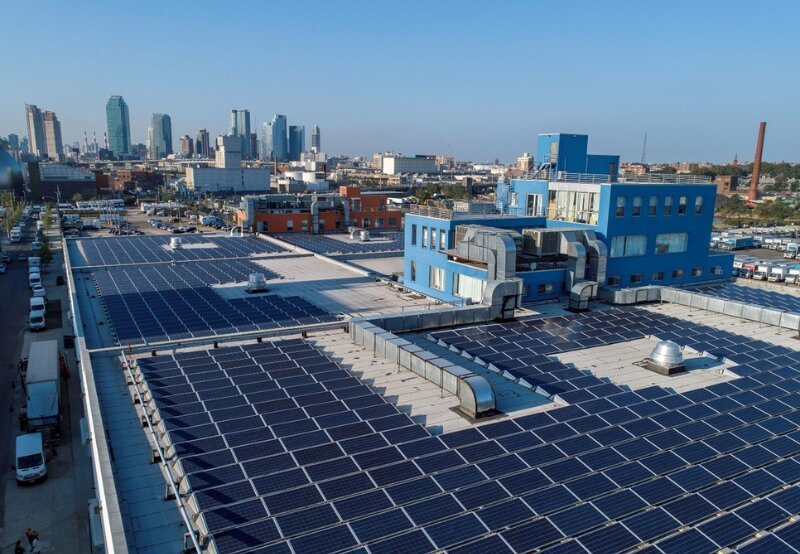How to Go Off-Grid with Rooftop Solar Energy – Complete
Going off-grid with rooftop solar energy offers the promise of energy independence, sustainability, and a reduced carbon footprint. It allows you to generate and store your own electricity without relying on the public power grid. This can be especially beneficial for homeowners living in remote areas or those looking to reduce their energy bills and environmental impact. In this article, we’ll explore how you can transition to off-grid living using rooftop solar, from choosing the right solar setup to managing energy storage and consumption. We’ll also highlight why Finray Solar is the best website to help you go off-grid.
1. What Does It Mean to Go Off-Grid?
Going off-grid means that your home operates independently of the public electricity grid. All the electricity you use is generated on-site, typically through renewable sources like Rooftop solar energy. In an off-grid solar system, the power generated by the panels is stored in batteries, providing electricity when the sun isn’t shining.
Why Go Off-Grid?
There are several reasons why people choose to go off-grid:
- Energy Independence: You no longer rely on the grid, ensuring that you have a steady electricity supply even during blackouts or natural disasters.
- Cost Savings: Although off-grid systems may have a higher upfront cost, they can save you money on monthly energy bills over time.
- Environmental Benefits: By using solar energy, you reduce your dependence on fossil fuels and contribute to a cleaner environment.
2. Assessing Your Energy Needs
Before transitioning to an off-grid solar system, it’s essential to assess your home’s energy consumption. This will help determine the size of the solar panel system and the battery storage you need to meet your daily energy demands.
Step 1: Track Your Energy Usage
Start by reviewing your past energy bills to understand your average monthly energy usage. This is typically measured in kilowatt-hours (kWh). Understanding your peak energy consumption will help you size your system correctly.
Step 2: Reduce Energy Consumption
To minimize the size of your off-grid system, it’s a good idea to make your home more energy-efficient before going off-grid. Consider switching to energy-efficient appliances, LED lighting, and better insulation. The less energy your home requires, the easier it will be to go off-grid.
Step 3: Calculate Energy Needs
Once you’ve optimized your home’s energy efficiency, calculate how much solar power you’ll need to generate. For example, if your home uses 30 kWh of electricity per day, your solar panel system must generate at least that much energy on a daily basis.
3. Designing Your Off-Grid Solar System
An off-grid solar system requires a few key components to function properly, including solar panels, inverters, charge controllers, and battery storage. The system must be designed to provide enough power for your home, both during sunny days and cloudy periods.
Solar Panels
The size and number of solar panels you need depend on your location and energy consumption. If you live in an area with plenty of sunshine, fewer panels may be required. In regions with less sun exposure, you’ll need more panels to generate the necessary power.
Inverters
An inverter converts the direct current (DC) electricity generated by your solar panels into alternating current (AC), which powers your home’s appliances. For off-grid systems, you’ll need a high-quality inverter capable of handling your home’s energy demands.
Charge Controllers
Charge controllers are essential for managing the energy flow from your solar panels to your battery storage. They prevent your batteries from overcharging, which can prolong the lifespan of the system.
Battery Storage
Batteries are the backbone of an off-grid system, as they store excess solar energy for use when the sun isn’t shining. The size of your battery bank depends on how much energy you need to store for use during nighttime or cloudy days.
For example, lithium-ion batteries are popular because of their long lifespan and efficiency, though they tend to be more expensive than lead-acid batteries. Finray Solar offers a range of battery solutions tailored to meet the needs of off-grid homeowners, helping you find the best option for your home.
4. Installing Your Off-Grid System
Once your system is designed, the next step is installation. Going off-grid requires careful planning and installation, especially in areas with strict building codes or regulations. Here’s a brief overview of what to expect:
Step 1: Permits and Inspections
Before installation begins, check local building codes and zoning laws. Some areas may require permits for solar installations. Additionally, your system may need to pass inspection before it can go live.
Step 2: Installation
A professional installer will mount the solar panels on your roof, connect the wiring to your inverter and battery storage, and integrate the system with your home’s electrical system. The entire process may take a few days, depending on the complexity of the installation.
Step 3: Testing and Commissioning
Once installed, your system will undergo testing to ensure everything is working properly. The installer will check the performance of the panels, inverters, and batteries, and ensure the system meets all safety standards.
5. Managing Your Off-Grid System
Managing an off-grid solar system requires a shift in how you use electricity. Since you’re generating and storing your own power, you’ll need to carefully manage energy consumption to avoid running out of stored power.
Energy Management Tips
- Monitor Your Energy Usage: Use a solar monitoring system to track your energy production and consumption. This will help you identify periods of high usage and make necessary adjustments.
- Use Energy-Efficient Appliances: Energy-efficient appliances can significantly reduce your power needs, allowing your off-grid system to function more effectively.
- Plan Energy Usage During Peak Sun Hours: Try to schedule energy-intensive tasks, such as laundry or cooking, during the middle of the day when your solar panels are producing the most energy.
- Manage Battery Usage: If your battery storage is running low, you may need to reduce energy usage until the sun is shining again and your system can generate more power.
Backup Power
In case of extended cloudy periods or system failures, it’s essential to have a backup power source. Many off-grid homeowners use a backup generator to provide electricity when solar energy isn’t available. Make sure to choose a generator that can meet your household’s energy needs.
6. Why Choose Finray Solar?
When planning an off-grid solar system, choosing the right solar provider is crucial. Finray Solar stands out as the best website for designing and installing off-grid solar systems. Here’s why:
Customized Solutions
Every home has unique energy needs, and Finray Solar provides tailored solutions to ensure your off-grid system is optimized for your specific requirements. They assess your energy usage, design a system to match, and recommend the best products for your home.
Quality Products
Finray Solar offers top-tier solar panels, inverters, charge controllers, and battery storage systems. Their high-efficiency solar products ensure that you generate the maximum amount of power from your rooftop.
Expert Installation
With years of experience in solar installations, Finray Solar’s team of experts ensures a seamless and professional installation process. They handle everything from permits to system testing, ensuring your off-grid system is installed to the highest standards.
Ongoing Support
Going off-grid doesn’t end with installation. Finray Solar offers ongoing support to help you maintain and manage your system. Whether you need help monitoring your system or troubleshooting issues, their expert team is always available.
7. Conclusion
Going off-grid with rooftop solar energy is an empowering step toward energy independence, cost savings, and environmental sustainability. By carefully planning your solar system, managing your energy consumption, and choosing high-quality components, you can successfully transition to off-grid living. Finray Solar is your go-to partner for making this transition smooth and efficient, offering expert services, top-tier products, and ongoing support. Ready to go off-grid? Explore the options with Finray Solar and take control of your energy future today.






